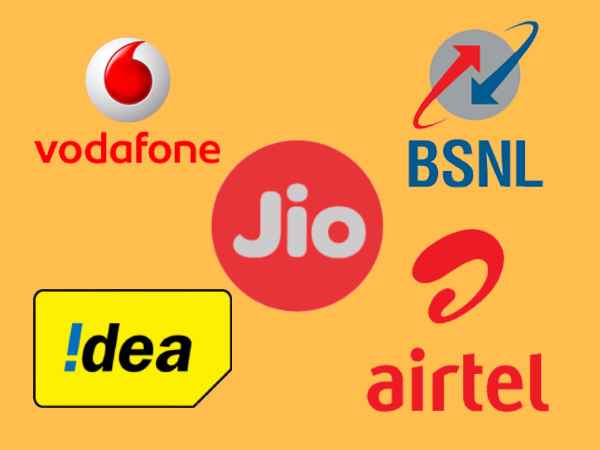
Boosters or repeaters, as they are commonly called, have become increasingly popular over the last few years. The equipment works by drawing in available mobile tower signals in low connectivity areas and amplifying and distributing it in small, concentrated locations, such as a building or a cluster of buildings. In the past, boosters have been used by the operators in areas, where mobile towers cannot be installed easily.
As per established norms, telecom service providers (TSPs) install such repeaters after thorough inspections, only after a request is raised or there is a requirement. The TSPs make sure that installing a repeater doesn’t hamper the network coverage for people outside the distribution area. Such devices manage available signal’s input-output mechanism and provide adequate network connectivity to a targeted (and its surrounding) area, thereby covering the entire low-network zone.
However, the grey market and online ecommerce stores are making illegal low cost repeaters available for anyone to buy and install illegally. The concern is that, such devices draw in network signals to provide connectivity to a particular building or area in an unregulated manner, thereby depleting the network strength in other areas that may share the particular network coverage. As a corollary, this shoots up incidences of call drops and general connectivity for all and sundry.
Thus, the rampant usage of such illegal repeaters in cities, installed in homes, guest houses and offices, interfere with mobile networks and degrade experience for all customers. Even landlords and home owners are illegally installing such devices in densely populated areas to attract tenants, thereby adversely impacting connectivity in the entire given area, be it 2G, 3G or 4G networks.
The telecom industry has voiced its concerns as to how these illegal repeaters have become a major nuisance and are one of the biggest reasons for customers facing network issues like call drops and low data speeds, especially in heavily populated localities. Available freely in electronics markets, these repeaters are installed by unauthorized agencies at homes, offices, hostels and guest houses to boost mobile signal strengths.
Mobile operators, who are making record investments in network expansions are grappling with the challenge of locating and shutting down these repeaters. Collectively, towards this end, the industry has approached DoT to take adequate measures, including filing FIRs against individuals installing these illegal signal repeaters in buildings across Delhi NCR. In the city alone, there are over 30% of cell sites (8,000 cells) having high interference from illegal repeaters across all bands and technologies. This is leading to about 7 to 10 times increase in call drops and blocked calls.
The problem is quite common even in developed countries. Last year, the towns of Charleville and Camooweal in Western Queensland, Australia, reported impacted mobile coverage with call drops and a lack of coverage.
Furthermore, these repeaters impact connectivity uplink path and amplify received noise at the site, which leads to degradation in network experience KPIs, such as accessibility, retention and user throughputs. Such equipment usually supports all spectrum bands and is constantly running, thereby interfering with service provider’s cell sites. Due to increase in interference in the uplink, mobile handsets transmit higher power to manage connectivity with the site. This leads to higher battery consumption and degraded network experience.
In Delhi and many other cities, most of such repeaters can be found in localities, where PGs and Hostels even advertise “Network Booster” as one of the facilities offered to the students. In certain cases, the issue is so prominent that it prevents licensed operators from providing uninterrupted telecom services and even in launching new services. The industry, already under dilapidating debt, is encountering mammoth losses because of this. Spectrum costs are high and telcos are losing on thousands of crores of investment and have requested immediate intervention from relevant Government authorities. The industry is calling for individuals and organisations selling, installing and housing these repeaters to be held accountable so that subscribers do not suffer the agony of call drops and interrupted connectivity issues. One of the ways this can be ensured is by allowing the provision of registering FIRs against defaulters or by imposing heavy penalties on such errant individuals and organisations.
The telecom operators have already submitted an application with WPC (DoT) for removal of around 200 illegal repeaters placed at various locations in the city. In some cases, even legal notices have also been issued by WPC to the owners of these repeaters. Use of such repeaters must be treated as a punishable offence with adequate jail terms or a fine, or both.
Moreover, the sale of such illegal repeaters should be banned with immediate effect and TERM and WMO wings should be directed to conduct raids to put a check on this menace. Additionally, authority should be granted to TERM or WMO wings for seizure and confiscation of illegal repeaters, boosters, jammers and faulty or leaky cable TV equipment causing untoward interferences. Also needed is time-bound resolution of identified network interference cases, so as to ensure flawless delivery of telecom services to customers.
Most of the manufacturers make use of cheap and recycled components that have short life spans. Moreover, since provisions for refunds, warrantees and customer service are almost zero; users will have no point of return if something goes wrong. Furthermore, the performance is poor, equipment is noisy and customers are always at the risk of facing lawful consequences. It is important to remember that not only are these repeaters illegal, but they are not even an effective solution to poor network coverage in an area. Since the market is highly unregulated, incidences of malfunction are also high and can pose a risk to people in close vicinity.
";

